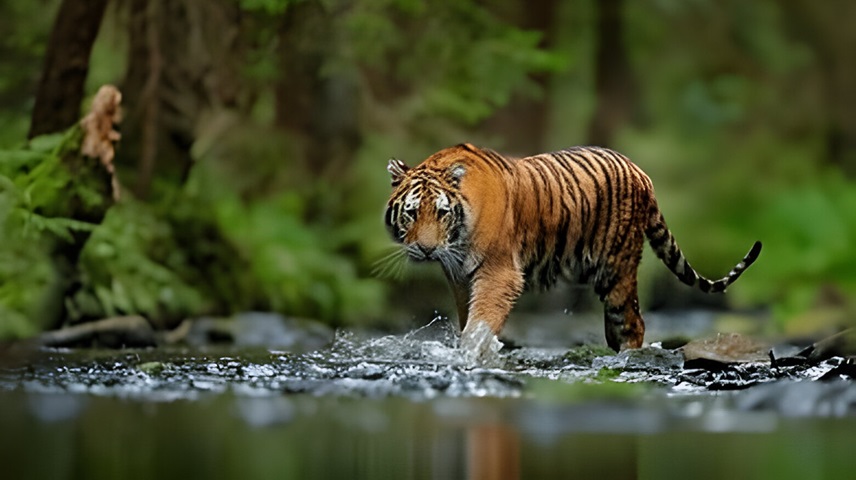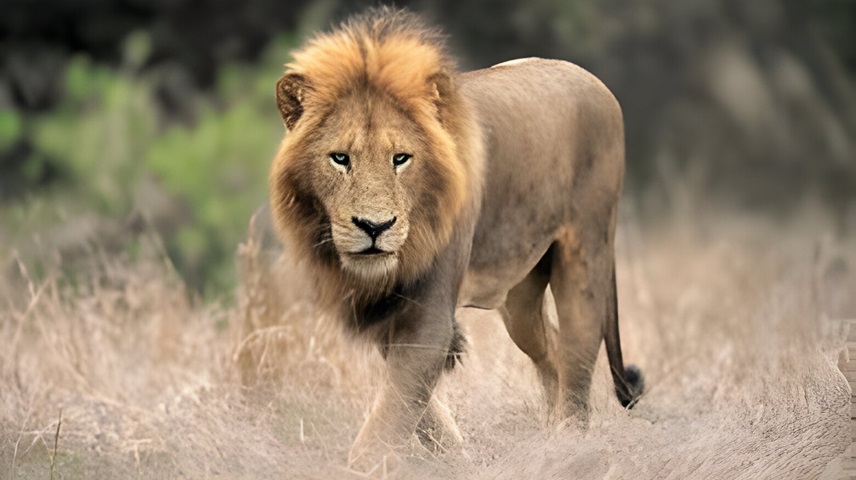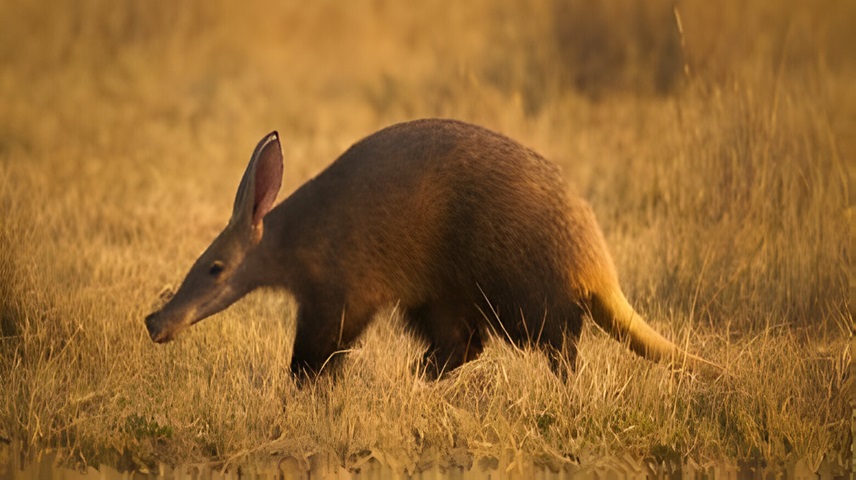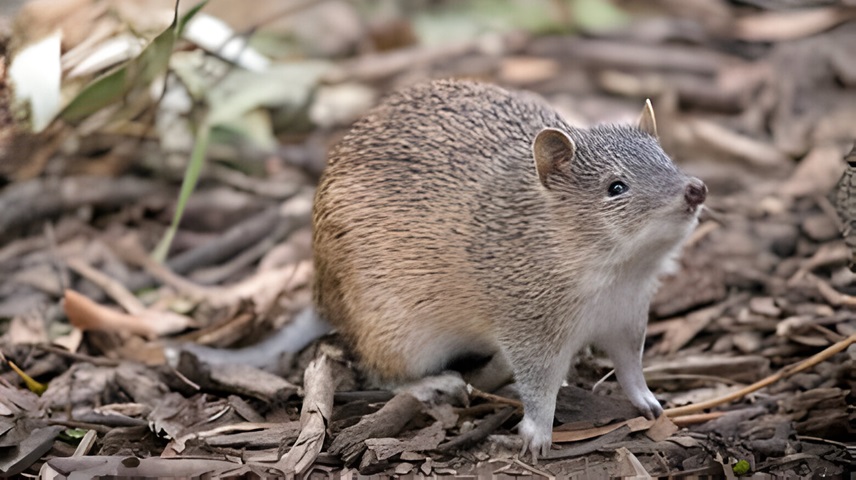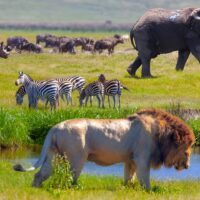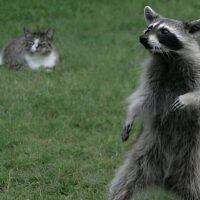Last Updated on February 22, 2025 by Mammals Life
In the diverse world of mammals, names often reflect the unique characteristics and evolutionary history of each species. Among these fascinating creatures, those with five-letter names stand out not just for their brevity but also for their intriguing behaviors, habitats, and physical attributes. This article delves into a selection of five-letter mammals, offering a glimpse into the lives of these animals and their roles within their ecosystems. Whether they are well-known or more obscure, each of these mammals has a story to tell, contributing to the rich tapestry of wildlife around the globe.
Top 5 Letter Mammal Names and Details
Addax
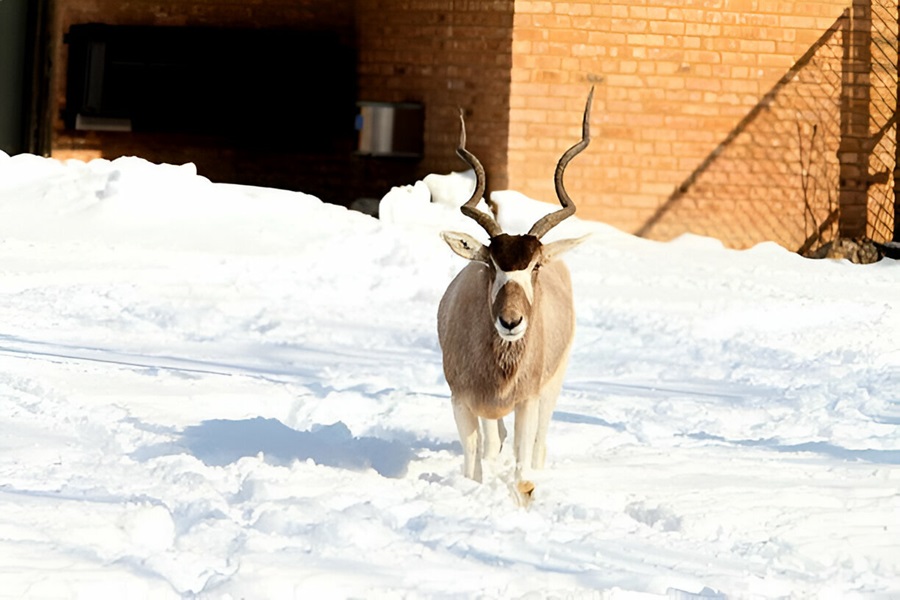
The addax is a desert-dwelling antelope known for its twisted horns and pale coat, which helps it blend into its sandy environment. Native to the Sahara, the Addax is critically endangered due to habitat loss and hunting. These animals are well-adapted to arid conditions and can go for long periods without water.
Akita
The Akita is a powerful and loyal dog breed originating from Japan. Known for its courage and strong protective instincts, the Akita has a rich history as a guard dog and companion. Its thick double coat makes it well-suited for cold climates, and it is renowned for its loyalty to its family.
Beago
The Beago is a crossbreed between a Beagle and a Golden Retriever, combining the best traits of both breeds. These dogs are known for their friendly and affectionate nature, making them excellent family pets. They possess a keen sense of smell from the Beagle and the friendly disposition of the Golden Retriever.
Bilby
Bilbies are small nocturnal marsupials native to Australia, known for their long ears and silky fur. They play a crucial role in their ecosystem by digging burrows, which helps aerate the soil. Unfortunately, bilbies are endangered due to habitat destruction and predation by introduced species like foxes and cats.
Bison
Bison are large, powerful herbivores native to North America and Europe. They are known for their massive heads, humped shoulders, and thick fur. Bison play a vital role in their ecosystems by grazing and helping to maintain the health of grasslands. Conservation efforts have helped to restore bison populations in many areas.
Bongo
Bongos are striking antelopes with a reddish-brown coat and white stripes, native to African forests. They are known for their elusive nature and primarily nocturnal habits. Bongos are crucial for their habitats as they help disperse seeds and maintain the health of their forest environments.
Camel
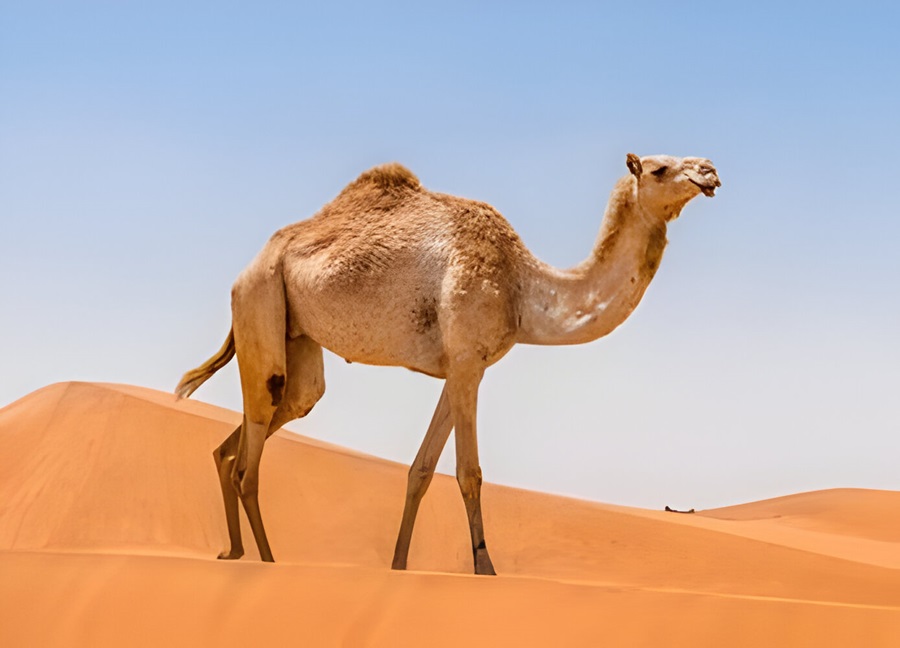
Camels are well-known for their humps, which store fat that they use as energy during long journeys in arid regions. Native to the Middle East and Africa, camels are indispensable for transportation and carrying goods across deserts. Their ability to withstand extreme heat and scarcity of water makes them unique.
Coati
Coatis are raccoon-like mammals found in Central and South America. They have long, flexible snouts and are highly social, often seen in groups. Coatis are omnivorous, feeding on fruits, insects, and small animals. Their foraging habits help control insect populations and disperse seeds.
Dhole
Dholes, also known as Asiatic wild dogs, are highly social and live in packs in the forests of Asia. They are excellent hunters, relying on teamwork to bring down prey much larger than themselves. Dholes are known for their distinctive whistling calls, which help coordinate their hunting efforts.
Dingo
Dingoes are wild canines native to Australia, recognizable by their sandy or reddish coats. They play a crucial role in their ecosystems as apex predators, helping control populations of other animals. Dingoes are highly adaptable and can live in a variety of environments, from deserts to forests.
Dorgi
The Dorgi is a hybrid dog breed resulting from a cross between a Dachshund and a Corgi. These small dogs are known for their playful and affectionate nature, making them great companions. They inherit the long body of the Dachshund and the short legs of the Corgi, giving them a unique appearance.
Doxle
The Doxle is another hybrid dog breed, a mix between a Dachshund and a Beagle. These dogs are friendly, energetic, and great with families. They often have the long body of a Dachshund and the expressive face of a Beagle, making them charming and affectionate pets.
Eland
Elands are large antelopes native to Africa, known for their spiral horns and robust bodies. They are one of the largest antelope species and are highly adaptable, living in a variety of habitats from savannas to mountains. Elands are important grazers and browsers, contributing to the ecological balance of their environments.
Feist
Feists are small hunting dogs, known for their agility and keen sense of smell. They are commonly used for hunting small game like squirrels in the United States. Feists are energetic and intelligent, making them excellent companions for active owners who enjoy outdoor activities.
Fossa
Fossas are carnivorous mammals native to Madagascar, resembling a mix between a cat and a mongoose. They are the island’s top predators and play a vital role in controlling the population of other animals. Fossas are known for their agility and ability to climb trees, hunting both on the ground and in the canopy.
Genet
Genets are small, agile carnivores found in Africa and Europe. They have long, slender bodies, spotted coats, and bushy tails. Genets are nocturnal and solitary, often hunting small mammals, birds, and insects. They are excellent climbers and can often be found in trees or rocky areas.
Goral
Gorals are small, goat-like mammals native to Asia, inhabiting mountainous regions. They have short, dense fur and are well-adapted to cold environments. Gorals are agile climbers, able to navigate steep, rocky terrain with ease. They feed on grasses, leaves, and shrubs, playing a role in their mountainous ecosystems.
Horgi
The Horgi is a crossbreed between a Husky and a Corgi, combining the best traits of both breeds. These dogs are known for their friendly and energetic personalities, making them great family pets. Horgis often has the distinctive markings of a Husky with the short legs of a Corgi.
Horse
Horses are domesticated mammals known for their strength, speed, and versatility. They have been used by humans for transportation, agriculture, and sport for thousands of years. Horses come in various breeds and sizes, each suited to different tasks and environments, making them invaluable to human civilization.
Human
Humans are unique among mammals for their advanced cognitive abilities, use of language, and capacity for creating complex societies. As the dominant species on Earth, humans have significantly impacted the planet’s ecosystems. Our ability to innovate and adapt has led to remarkable achievements and profound challenges.
Husky
Huskies are sled dogs known for their endurance, strength, and thick fur, which protects them in harsh, cold climates. Originally bred by the Chukchi people of Siberia, Huskies are famous for their striking blue eyes and friendly nature. They are highly energetic and require regular exercise and mental stimulation.
Hyena
Hyenas are large carnivores native to Africa and Asia, known for their powerful jaws and distinctive laughing calls. They are skilled hunters and scavengers, often hunting in packs. Hyenas play a crucial role in their ecosystems by controlling prey populations and cleaning up carrion.
Indri
Indris are large lemurs native to Madagascar, known for their loud, distinctive calls and vertical leaping ability. They are arboreal, living in the forest canopy and feeding on leaves, fruits, and flowers. Indris are important for seed dispersal and maintaining the health of their forest habitats.
Kiang
Kiangs are wild asses native to the Tibetan Plateau, known for their sturdy build and thick coats. They live in harsh, high-altitude environments and feed on grasses and shrubs. Kiangs are important grazers in their ecosystems, helping to maintain the balance of vegetation.
Kishu
The Kishu is a dog breed originating from Japan, known for its hunting abilities and loyalty. Kishus have a strong prey drive and are highly intelligent, making them excellent hunters. They are also loyal and protective of their families, making them good companions and guard dogs.
Koala
Koalas are marsupials native to Australia, known for their cuddly appearance and eucalyptus diet. They spend most of their lives in trees, feeding on eucalyptus leaves and sleeping up to 20 hours a day. Koalas are an iconic species and play a crucial role in their ecosystems by promoting the growth of eucalyptus forests.
Lemur
Lemurs are primates native to Madagascar, known for their large eyes and long tails. They are highly social animals, living in groups and communicating with various vocalizations and gestures. Lemurs play a vital role in their ecosystems by dispersing seeds and pollinating flowers.
Liger
Ligers are hybrid animals resulting from the crossbreeding of a male lion and a female tiger. They are the largest of all big cats, often growing larger than both parent species. Ligers combine characteristics of both lions and tigers, such as the social nature of lions and the swimming ability of tigers.
Llama
Llamas are domesticated South American mammals known for their wool and ability to carry heavy loads. They have been used by indigenous peoples of the Andes for transportation and as a source of wool and meat. Llamas are social animals and live in herds, playing an important role in their communities.
Loris
Lorises are small, nocturnal primates found in Asia and Africa. They have large eyes adapted for night vision and move slowly through the trees. Lorises feed on insects, fruits, and small animals. They are important for controlling insect populations and pollinating flowers.
Moose
Moose are the largest members of the deer family, native to North America and Eurasia. They are known for their impressive antlers and solitary nature. Moose are important grazers, feeding on aquatic plants, shrubs, and trees. They play a crucial role in maintaining the health of their forest and wetland habitats.
Mouse
Mice are small rodents found worldwide, known for their quick movements and ability to adapt to various environments. They play a crucial role in their ecosystems as prey for many predators and as seed dispersers. Mice are also important in scientific research due to their genetic similarities to humans.
Nyala
Nyalas are spiral-horned antelopes native to southern Africa, known for their striking appearance and sexual dimorphism. Males have dark, shaggy coats, while females are reddish-brown. Nyalas are important grazers and browsers, contributing to the health of their ecosystems by maintaining vegetation balance.
Okapi
Okapis are unique mammals native to the rainforests of the Democratic Republic of Congo, known for their zebra-like stripes and giraffe-like body shape. They are solitary and elusive, feeding on leaves, fruits, and fungi. Okapis play a crucial role in their ecosystems by dispersing seeds and promoting forest growth.
Oribi
Oribis are small antelopes found in sub-Saharan Africa, known for their slender build and swift movements. They live in grasslands and savannas, feeding on grasses and herbs. Oribis are important prey for predators and contribute to the health of their ecosystems by grazing on vegetation.
Otter
Otters are semi-aquatic mammals found in various regions worldwide, known for their playful behavior and sleek bodies. They feed on fish, crustaceans, and other aquatic animals. Otters are important for maintaining the health of aquatic ecosystems by controlling prey populations and promoting biodiversity.
Quoll
Quolls are carnivorous marsupials native to Australia and New Guinea, known for their spotted coats and nocturnal habits. They are important predators, feeding on insects, small mammals, and birds. Quolls play a vital role in their ecosystems by controlling prey populations and maintaining ecological balance.
Sable
Sables are small, carnivorous mammals found in Russia and parts of Asia, known for their luxurious fur. They live in forested areas and feed on small animals and plants. Sables are important for controlling prey populations and maintaining the health of their forest ecosystems.
Saiga
Saigas are critically endangered antelopes native to the steppes of Central Asia, known for their distinctive, bulbous noses. They are well-adapted to harsh environments, feeding on grasses and herbs. Saigas play a crucial role in their ecosystems by grazing and maintaining the balance of vegetation.
Saola
Saolas, also known as the “Asian unicorn,” are critically endangered mammals found in the forests of Vietnam and Laos. They are elusive and rarely seen, making them one of the most mysterious animals in the world. Saolas are important for maintaining the biodiversity of their forest habitats.
Sheep
Sheep are domesticated mammals known for their wool, meat, and milk. They have been integral to human agriculture for thousands of years. Sheep are highly adaptable and can thrive in various environments. They play a crucial role in maintaining the health of grasslands through grazing.
Shrew
Shrews are small, insectivorous mammals found worldwide, known for their high metabolism and rapid movements. They play a crucial role in controlling insect populations and are an important food source for many predators. Shrews are vital for maintaining the health of their ecosystems.
Skunk
Skunks are known for their distinctive black-and-white coloration and ability to spray a foul-smelling liquid as a defense mechanism. They are omnivorous, feeding on insects, small animals, and plants. Skunks play a crucial role in controlling insect populations and dispersing seeds.
Sloth
Sloths are slow-moving, tree-dwelling mammals found in Central and South America. They have long limbs and claws adapted for hanging from branches. Sloths feed on leaves, fruits, and flowers, and their slow metabolism allows them to survive on a low-energy diet. They play a role in maintaining the health of their forest habitats.
Stoat
Stoats, also known as short-tailed weasels, are small carnivorous mammals found in North America and Eurasia. They have a slender body and are known for their agility and hunting skills. Stoats feed on small mammals, birds, and insects, playing a crucial role in controlling prey populations.
Takin
Takins are large, goat-like mammals native to the mountainous regions of Asia. They have a stocky build and are well-adapted to cold environments. Takins feed on grasses, leaves, and shrubs, contributing to the ecological balance of their habitats. They are important for maintaining the health of their mountain ecosystems.
Tapir
Tapirs are large, herbivorous mammals found in Central and South America and Southeast Asia. They have a distinctive, elongated snout used for grasping leaves and fruits. Tapirs play a crucial role in their ecosystems by dispersing seeds and promoting forest growth.
Tiger
Tigers are the largest of all big cats, known for their striking orange and black stripes. Native to Asia, they are apex predators, playing a vital role in maintaining the balance of their ecosystems. Tigers are solitary and territorial, relying on stealth and strength to hunt their prey.
Xerus
Xeruses are ground squirrels found in Africa, known for their bushy tails and social behavior. They live in burrows and feed on seeds, nuts, and insects. Xeruses play a crucial role in their ecosystems by dispersing seeds and controlling insect populations.
Zebra
Zebras are herbivorous mammals native to Africa, known for their distinctive black-and-white stripes. They live in herds and are highly social animals. Zebras play a vital role in their ecosystems by grazing on grasses and maintaining the health of their savanna habitats.
Zokor
Zokors are burrowing rodents found in Central Asia, known for their strong forelimbs and subterranean lifestyle. They feed on roots, tubers, and plant stems. Zokors play a crucial role in their ecosystems by aerating the soil and promoting plant growth through their digging activities.
Zorse
Zorses are hybrid animals resulting from the crossbreeding of a zebra and a horse. They combine the strength and size of a horse with the distinctive stripes of a zebra. Zorses are rare and typically bred for novelty, inheriting traits from both parent species and showcasing unique characteristics.
Conclusion
Five-letter mammal names represent a fascinating cross-section of the animal kingdom, highlighting the diversity and adaptability of these creatures. From the deserts of Africa to the forests of Madagascar, each of these mammals plays a crucial role in their respective ecosystems. Their unique characteristics, behaviors, and habitats demonstrate the remarkable variety of life on Earth. Understanding and appreciating these animals can foster a greater sense of connection to the natural world and the importance of conservation efforts to protect these incredible species. Whether common or rare, each of these mammals contributes to the rich tapestry of biodiversity that makes our planet so extraordinary.
Read More:
List of 3 Letter Mammal Names
List of 4 Letter Mammal Names
List of 6 Letter Mammal Names
List of 7 Letter Mammal Names
List of 8 Letter Mammal Names
List of 9 Letter Mammal Names

